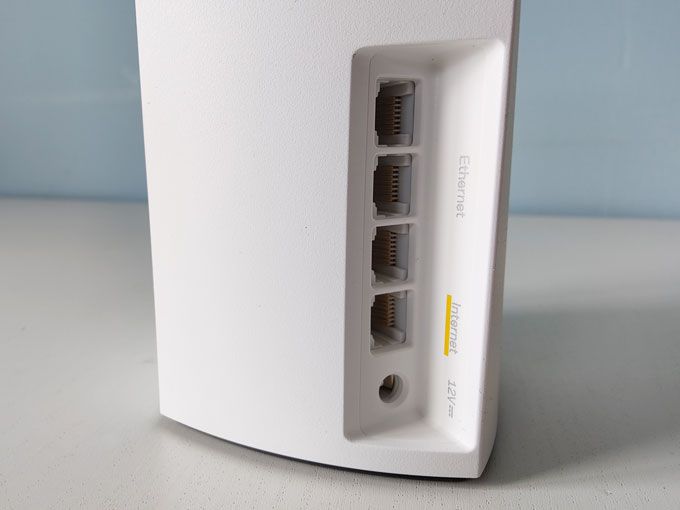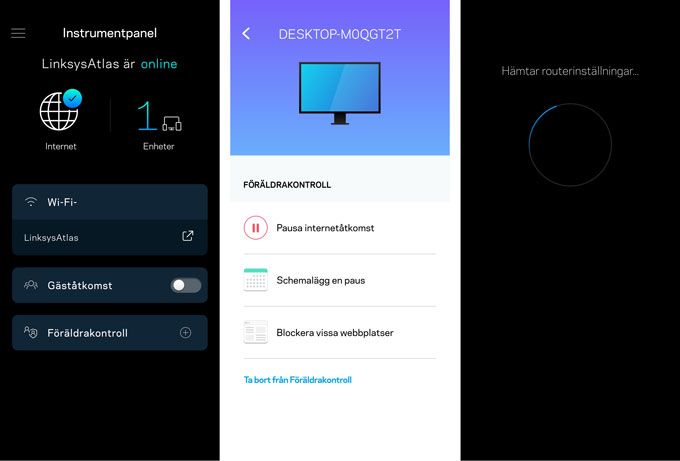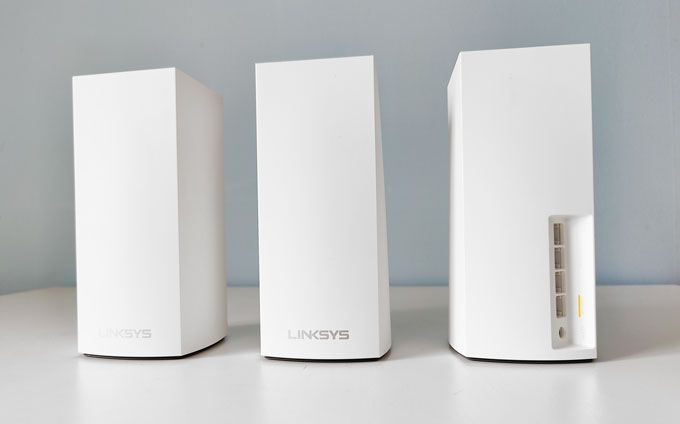Linksys Velop routers have been a familiar sight ever since home mesh systems became a common occurrence. They have basically looked and been called the same thing for several years. Easily recognizable narrow, square towers in white, with reliable performance and often good value for money. Most are similar to the manufacturer’s latest wifi 6-based mesh package. In addition to the name. Now they are suddenly called Atlas Pro, and are “powered by Velop”.
Rating 3.5 out of 5
Opinion
Despite the name change, this is exactly the same familiar Velop mesh that we have seen before. Fast, easy to use and nice, but not very functional. The range is approved, but there are systems that better cover larger areas. If you do not need to spread the nodes to the max, it is a stable purchase. But you can count on manual mecha to unlock its full potential.
Positively
- High top speeds
- Plenty of fixed network ports
- Compact design
- Easy to use app
Negative
- Somewhat short range per node
- Few and limited extra features
- Slow handling
It is probably the first of several upcoming routers, both mesh packages and standalone routers with support for the same mesh technology. Linksys probably wants to erase the boundaries between them. For example, Asus did the same with its Aimesh system, which can connect their ZenWifi mesh routers and several of their traditional routers.
This package is called Atlas Pro 6, where we assume that 6 stands for wifi 6, as it is the wifi standard it is based on. However, we have to wait for Linksys’ first wifi 6E package to arrive in Sweden, but for most users, wifi 6 is still the best choice.
Atlas Pro 6 is sold in one, two and three packs. We have tested the largest package, which costs just under SEK 5,500. On the outside, there is nothing significant that sets it apart from previous Velop devices. It is the same high-narrow design of square white towers with a flat top that has holes for heat dissipation and a status diode. On the back are four Ethernet ports with gigabit speed, one of which is for Internet connection. The three devices in the package are identical – the one you connect first becomes the central router.
Lots of space at 5 GHz
The other two do not use the wan port, in total you get nine fixed network ports in the home. If you want to run an Ethernet backhaul, ie a fixed cable between the nodes to free up bandwidth in your wifi, it is connected via the wan port.
Wifi is on two frequency bands and backhaul between the nodes takes place on the 5 GHz band with dynamic assignment. You can count on some of the system’s bandwidth being used for that purpose. It is in itself as generous as it can be with a capacity of up to 4.8 Gbit / s. Multiple mesh nodes and more end users streaming high definition, browsing and downloading data at the same time should not be a big problem, as long as the signal is strong. On the 2.4 GHz band, you then get 574 Mbit / s.
Installation and settings are easiest with the Linksys mobile app for Android or iOS. In fact, we have to look really hard to figure out that the router also has a web interface, it is obvious that it is via mobile it is intended to be handled. There are no extra functions in the web interface, but some detailed settings for wifi and especially the firewall are here, which you cannot access from the app.

Basic functions and nothing more
The router has a very basic range of functions. You can set up a simple guest network, you get a parental control with a surfing schedule for connected devices, only a manual blacklist for urls to be blocked and you get a QoS function, so you can prioritize giving a handful of computers or mobiles extra bandwidth . That’s all. Without usb ports you will not get any file server or printer sharing function, other types of functions, such as vpn server you will also be able to do without.
The installation is simple, with bluetooth in the router it is easily detected by the app and most things are handled automatically. During installation, Linksys requires that an account be registered to which the router is connected. This then gives you access to remote administration, which is not wrong.
However, the installation is unusually patient. There are a couple of steps where each node must be “initiated” and “optimized” with several minutes of waiting time. This is something that then becomes a recurring theme with the administration in general. It’s nice and simple, but long waiting times on several occasions where status has to be detected or router settings have to be retrieved are annoying.

High speeds, in the end
The sides for the 2.4 and 5 GHz bands are combined by default and the router itself chooses how devices are to be connected. The router seems to have a tendency to pass many devices to 2.4 GHz, which we would have preferred to have at 5 GHz, both laptops, desktops and mobiles. It is possible to set them separately, but for that you have to enter the web interface, it is not possible via the app. It is also a rather hidden attitude.
Performance ultimately lives up to expectations. The top speed is excellent. With support for 160 MHz channel width, it is possible to get close to gigabit speed to a modern wifi 6 or wifi 6e receiver with 2 x 2 mimo support. We get at best 910 Mbit / s in the same room as the main router, and are still over 700 Mbit / s in an adjacent room. The loss of performance if we surf via one of the extranodes is also marginal.
The range per node is not among the absolute best, but still gets approved. The best wifi 6 systems we have tested allow you to place an extension with a distance of around 25 meters including walls in the road. Here we reach 19 meters in our test room before we are down to the same speeds. This means that you may need to place the nodes more frequently for the same minimum level of speed, or alternatively settle for a lower top speed, except near the main router.

It’s not a huge problem. A three-pack of Atlas Pro 6 is still enough for wifi coverage in a medium-sized villa. But in a large house, or one with thick interior walls, it may be wise to buy an extra unit to expand with.
If Linksys can adjust the automation slightly, so that more clients are assigned faster frequency bands in the merged mode, we could raise the rating. Right now, that means you have to make manual settings to be sure of getting the right speed. However, it may be worth it.
Specifications
Product name: Atlas Pro 6 MX5503
Tested: May 2022
Manufacturer: Linksys
Wifi type: Wifi 6, mu-mimo 2×2
Frequency band: 2.4 + 5 GHz
Wifi capacity574 + 4802 Mbit / s
Number of nodes: 3
Security: Wpa2, wpa3, wps
Connections per unit: 3 gigabit wan, 1st gigabit lan
Speed, 3m *: 910 Mbit / s
Range per unit **: 19 meters
Admin interface: App, web
Remote administration: Yes, via app
Other functions: Guest network, parental control, QoS.
Size per unit: 8.6 x 8.6 x 28.4 cm
Rec. Award: 5,490 kr
Award: Costs SEK 5,399 at Webhallen
* Measured on the system’s main unit against laptop with wifi 6
** Longest distance, including two interior walls, where a new extender is needed to maintain a surfing speed of at least 200 Mbit / s.
.
[related_posts_by_tax taxonomies=”post_tag”]
The post Test: Linksys Atlas Pro 6 – fast and easy wifi 6-mesh appeared first on Gamingsym.
